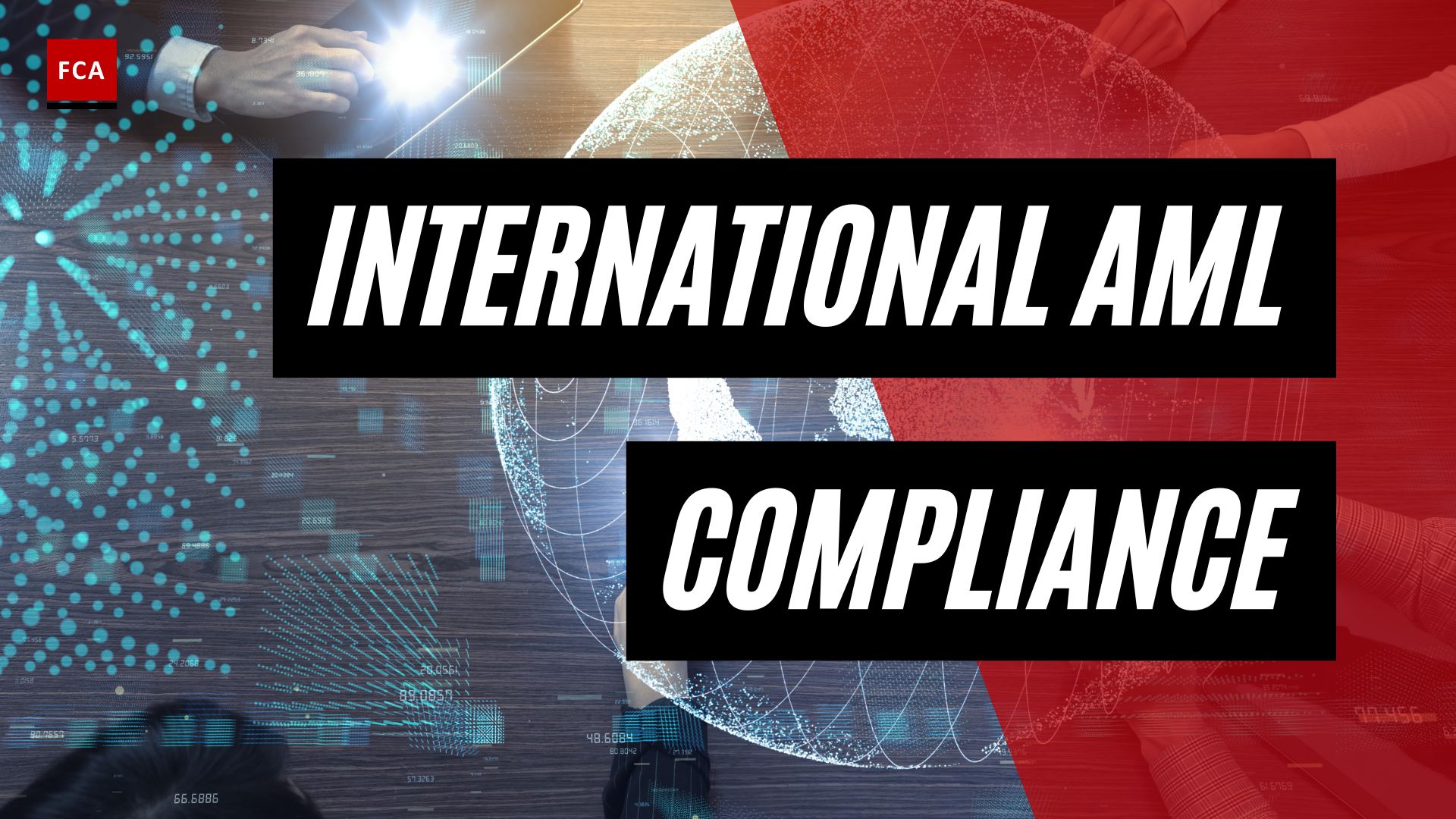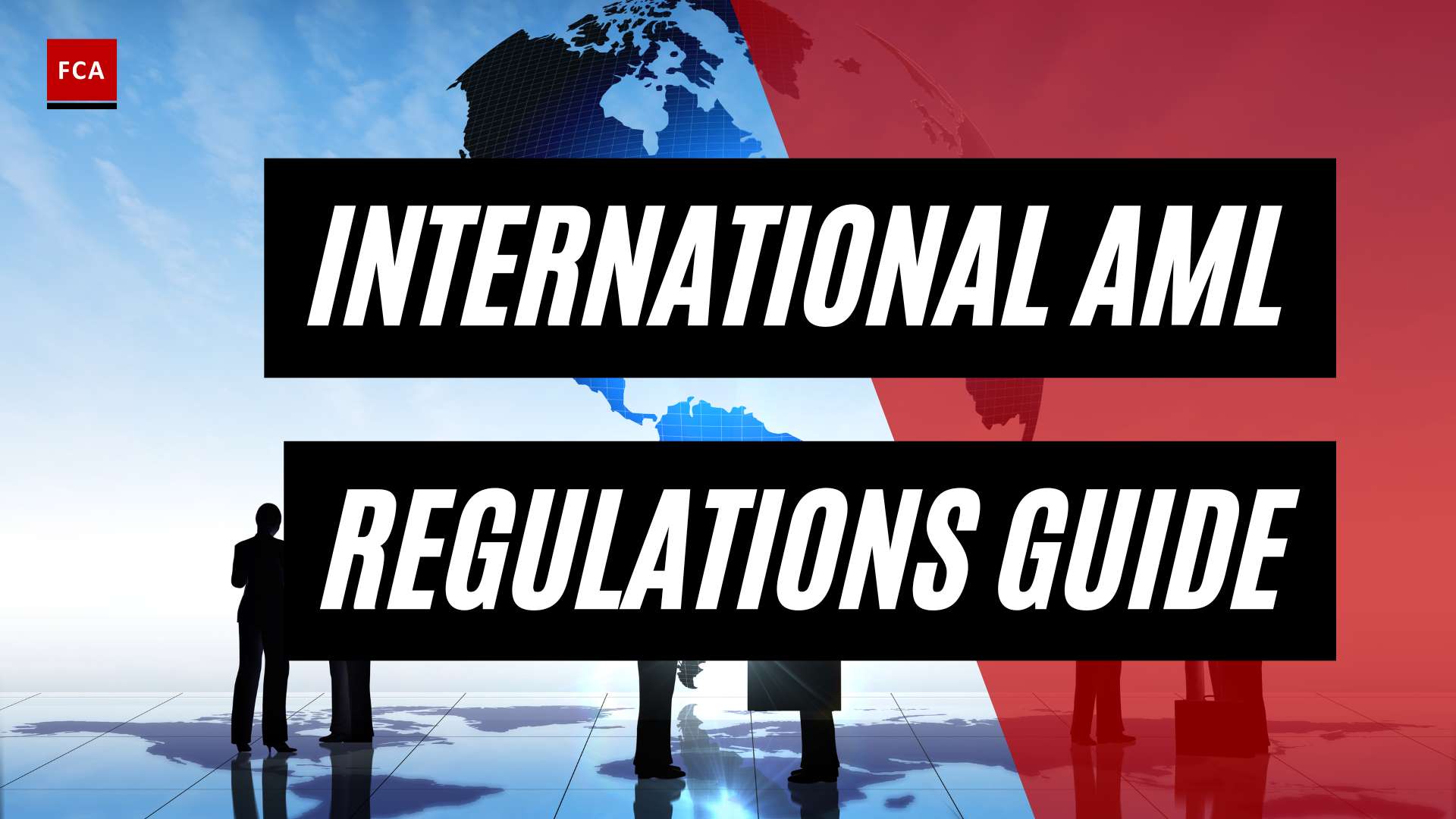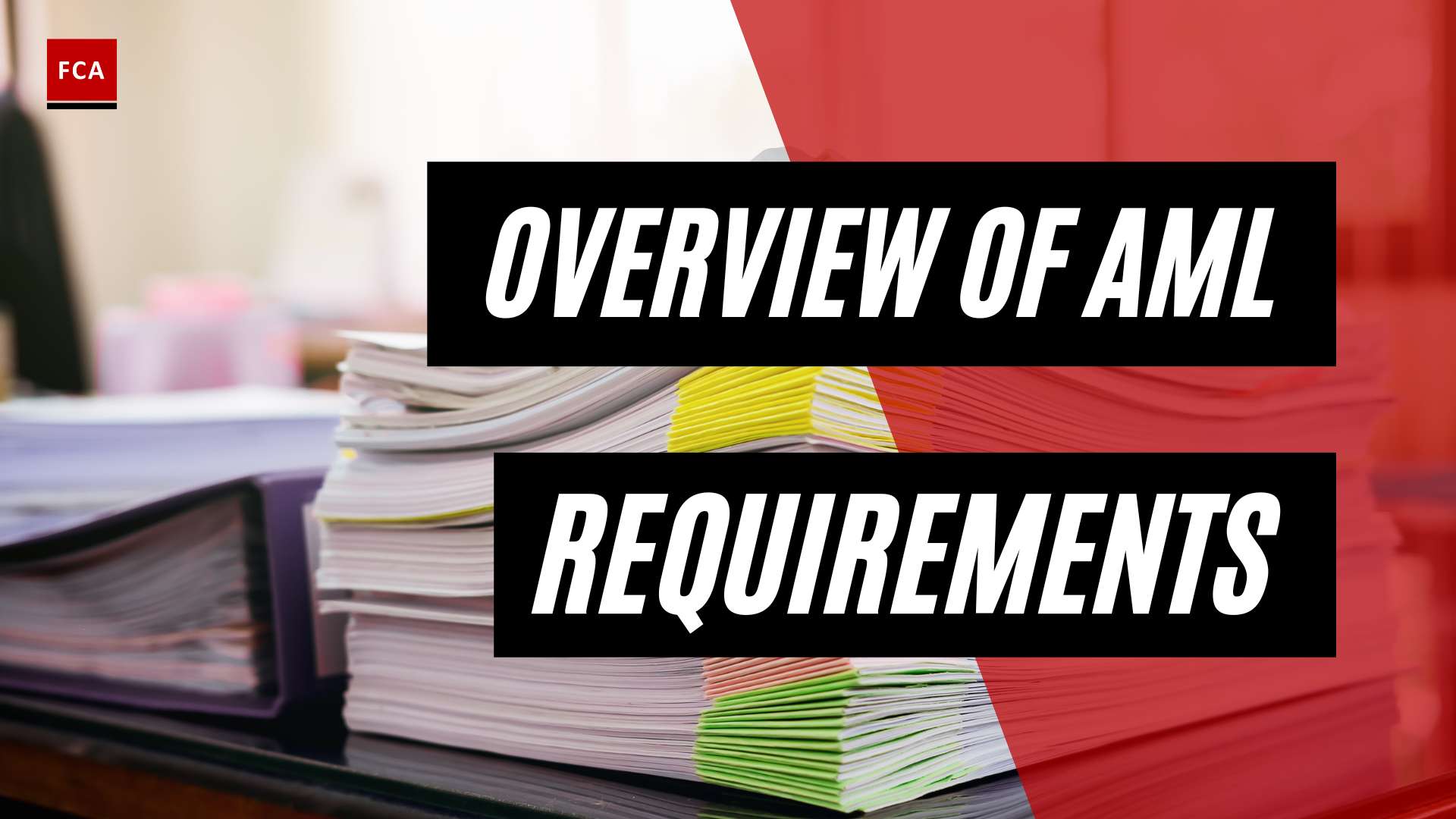AML Compliance for Robo-Advisors
As robo-advisors continue to gain popularity in the asset and wealth management industry, it becomes increasingly important for these platforms to prioritize Anti-Money Laundering (AML) compliance. AML compliance refers to the measures and processes put in place to prevent money laundering and terrorist financing activities.
Introduction to AML Compliance
AML compliance involves implementing effective policies, procedures, and controls to mitigate the risks associated with money laundering and terrorist financing. For robo-advisors, this entails conducting thorough customer due diligence, ongoing monitoring of client accounts, and reporting suspicious activities to financial intelligence units or regulators when necessary. By adhering to AML regulations, robo-advisors contribute to the overall integrity and security of the financial system.
As highlighted by Deloitte, the rapid growth of robo-advisors in recent years has drawn attention to the need for AML compliance. These platforms play a crucial role in screening clients and transactions for red flags that may indicate suspicious activities. By implementing robust AML compliance measures, robo-advisors can effectively fulfill their responsibilities in preventing financial crimes.
Importance of AML Compliance for Robo-Advisors
The importance of AML compliance for robo-advisors cannot be overstated. By engaging in AML compliance efforts, these platforms contribute to the protection of the financial system and help prevent illicit activities such as money laundering and terrorist financing.
AML compliance for robo-advisors requires a comprehensive understanding of the regulatory landscape. Various regulatory bodies, such as the Securities and Exchange Commission (SEC), the Canadian Securities Administrators (CSA), and the Financial Action Task Force (FATF), have established guidelines and regulations that robo-advisors must adhere to.
To effectively address AML compliance, robo-advisors can leverage technology solutions such as artificial intelligence (AI) and machine learning. By incorporating AI-powered transaction monitoring and client onboarding systems, robo-advisors can enhance their ability to detect and prevent suspicious activities. These technologies can also assist in meeting regulatory requirements and streamlining compliance processes.
In summary, AML compliance is of utmost importance for robo-advisors. By implementing robust measures and leveraging technology solutions, robo-advisors can ensure the integrity of their platforms and contribute to the overall security of the financial system. To learn more about emerging trends and technologies in AML compliance, check out our articles on artificial intelligence in AML, machine learning in AML, and blockchain and AML.
Payment Security Threats for Robo-Advisors
Robo-advisors, like any other financial service provider, face certain payment security threats that can undermine the trust and integrity of their platforms. Understanding these threats is crucial for implementing effective measures to safeguard customer information and financial transactions. The primary payment security threats for robo-advisors include fraud and identity theft, data breaches and cyberattacks, as well as compliance and regulation.
Fraud and Identity Theft
Fraud and identity theft pose significant risks to robo-advisors. Fraudsters can exploit stolen or fake credentials to conduct unauthorized transactions on robo-advisor platforms, potentially leading to financial losses and legal disputes. To mitigate this threat, robo-advisors must implement robust authentication measures, such as biometrics and multi-factor authentication, to ensure that only authorized individuals can access and transact on the platform. By closely monitoring for suspicious activities and promptly responding to any potential fraud indicators, robo-advisors can protect their customers and maintain the integrity of their services.
Data Breaches and Cyberattacks
Robo-advisors store vast amounts of sensitive customer information, making them attractive targets for cybercriminals. Data breaches and cyberattacks can result in the unauthorized access, theft, or exposure of customer data, leading to legal issues, reputational damage, and decreased customer loyalty. To enhance payment security, robo-advisors should employ robust cybersecurity measures. This includes implementing strong encryption methods, maintaining up-to-date firewalls, regularly updating software, conducting security audits, and providing staff training on cybersecurity best practices. By investing in robust security measures, robo-advisors can mitigate the risk of data breaches and cyberattacks, ensuring the protection of customer information.
Compliance and Regulation
Compliance with payment-related regulations is a critical aspect of ensuring payment security for robo-advisors. These platforms must adhere to various rules regarding payment processing, data protection, anti-money laundering (AML), and consumer protection in a complex regulatory landscape. Non-compliance can result in legal actions, fines, or restrictions on operating in specific regions. To address this threat, robo-advisors need to stay informed about regulatory changes, adjust their procedures accordingly, engage with reputable payment service providers, and seek legal guidance when necessary. By maintaining a strong compliance framework, robo-advisors can mitigate payment security risks and build trust with their customers.
Understanding and addressing these payment security threats is essential for robo-advisors to protect their customers’ financial transactions and personal information. By implementing robust authentication measures, enhancing cybersecurity protocols, and ensuring compliance with relevant regulations, robo-advisors can create a secure environment for their users and maintain the integrity of their platform.
Addressing Payment Security Threats
To ensure the security of transactions and protect both the platform and its users, robo-advisors must address various payment security threats. This section explores the measures that can be taken to address these threats, including authentication measures, enhancing security measures, and staying compliant with regulations.
Authentication Measures for Robo-Advisors
Robo-advisors face the payment security threat of fraud and identity theft, where fraudsters exploit stolen credentials to conduct unauthorized transactions on robo-advisor platforms. To mitigate this threat, robust authentication measures should be implemented.
- Biometrics: Implementing biometric authentication, such as fingerprint or facial recognition, adds an extra layer of security by verifying the user’s unique physiological characteristics.
- Multi-Factor Authentication (MFA): Requiring users to authenticate using multiple factors, such as passwords, security tokens, or one-time passcodes, provides additional security against unauthorized access.
By implementing these authentication measures, robo-advisors can significantly reduce the risk of fraudulent transactions and unauthorized account access. Regularly monitoring for suspicious activities is also essential to detect and prevent potential security breaches.
Enhancing Security Measures
Data breaches and cyberattacks pose significant payment security threats to robo-advisors as hackers target these platforms to access sensitive customer data. To enhance security and protect against these threats, robo-advisors should consider the following measures:
- Strong Encryption: Utilize encryption technologies to protect data both at rest and in transit. This ensures that even if data is intercepted, it remains unreadable and secure.
- Firewalls and Intrusion Detection Systems: Implement robust firewall systems to control network traffic and intrusion detection systems that monitor for suspicious activities.
- Regular Software Updates: Keep software and systems up to date with the latest security patches and fixes to address vulnerabilities and protect against known threats.
- Staff Training: Provide comprehensive training to employees on cybersecurity best practices, including awareness of phishing attacks, password security, and safe browsing habits.
By adopting these security measures, robo-advisors can fortify their platforms against data breaches, minimize the risk of unauthorized access, and protect sensitive customer information.
Staying Compliant with Regulations
Compliance and regulation represent critical payment security threats for robo-advisors. Adhering to various rules regarding payment processing, data protection, anti-money laundering (AML), and consumer protection is essential in today’s complex regulatory landscape.
To stay compliant with regulations, robo-advisors should:
- Stay Informed: Stay up to date with changes in regulations and industry best practices related to payment security and compliance. Regularly review and assess the impact of new regulations and adjust procedures accordingly.
- Engage with Reputable Providers: Engage with reputable payment service providers that have a strong track record in compliance and security. Partnering with trusted providers can help ensure that the necessary security measures are in place.
- Seek Legal Guidance: When in doubt, seek legal guidance to ensure compliance with relevant regulations. Legal professionals can provide insights and guidance specific to the jurisdiction in which the robo-advisor operates.
Non-compliance with regulations can lead to legal actions, fines, or restrictions on operating in specific regions. By proactively staying informed, engaging with reputable providers, and seeking legal guidance when necessary, robo-advisors can navigate the complex regulatory landscape and ensure compliance with payment security regulations.
Addressing payment security threats is crucial for robo-advisors to provide a secure platform for their users and maintain trust in the fintech industry. By implementing robust authentication measures, enhancing security measures, and staying compliant with regulations, robo-advisors can mitigate risks and protect against potential payment security threats.
Role of AI in AML Compliance
As the financial landscape continues to evolve, the role of artificial intelligence (AI) in anti-money laundering (AML) compliance becomes increasingly vital. AI-powered solutions are revolutionizing the way robo-advisors address AML compliance, offering advanced capabilities in transaction monitoring, client onboarding, and regulatory compliance.
AI-Powered Transaction Monitoring
Transaction monitoring systems are crucial in combating financial crime, thwarting money laundering efforts, and maintaining adherence to regulatory standards (InvestGlass). AI-powered transaction monitoring tools, such as the one provided by InvestGlass, analyze millions of transactions in real-time, leveraging machine learning algorithms to detect and prevent illicit financial activities (InvestGlass). These systems offer customizable and scalable solutions, adapting to the unique operational needs of each client, while providing robust analytics and reporting capabilities to stay ahead of regulatory changes (InvestGlass).
InvestGlass, for instance, empowers financial institutions with a dynamic transaction monitoring tool that safeguards their operations, enhances their ability to oversee transactions, and ensures full compliance with ease (InvestGlass). By harnessing the power of AI and machine learning, these tools efficiently identify potential cases of money laundering or terrorist financing, reducing the risk of financial crime.
AI in Client Onboarding and Account Setup
AI also plays a significant role in streamlining the client onboarding and account setup processes. Firms can leverage AI technology to automate compliance processes, ensuring adherence to regulatory requirements while enhancing risk management (Aloa). By automating tasks such as identity verification, document processing, and risk assessment, AI-powered systems enable robo-advisors to onboard clients more efficiently and effectively.
For example, HSBC has developed a machine learning system called “Aquila” that analyzes millions of transactions per day, flagging potential cases of money laundering or terrorist financing and reducing compliance risk. This AI-powered platform enhances AML compliance by leveraging advanced algorithms to identify suspicious activities and ensure robust monitoring.
AI for Regulatory Compliance
AI-driven technologies also contribute to regulatory compliance within the fintech industry. By automating compliance processes and monitoring transactions, AI systems help financial institutions detect potential violations and enhance risk management for both companies and customers (Aloa). These systems analyze vast amounts of data, including emails, communications, and market information, to identify potential risks, ensure adherence to regulations, and reduce compliance risk.
For instance, Goldman Sachs has implemented an AI-powered platform called “Saxon” that analyzes emails and communications to monitor compliance with regulations and internal policies, minimizing compliance risk in the financial sector (LinkedIn). Allianz Global Investors utilizes an AI-powered risk management system called “Risk Monitor” to analyze market data using machine learning algorithms, identifying potential risks in real-time and enhancing investment performance (LinkedIn).
By leveraging AI technology, robo-advisors can enhance their AML compliance efforts, streamline processes, and stay ahead of emerging regulatory requirements. These advancements in AI-driven solutions not only contribute to a more efficient and effective compliance framework but also help safeguard the integrity of the financial industry.
Regulatory Landscape for Robo-Advisors
As the use of robo-advisors continues to grow in the financial industry, it is essential for these automated platforms to adhere to regulatory standards and anti-money laundering (AML) compliance. Robo-advisors are subject to regulations set by various governing bodies. Let’s explore some key regulatory authorities in this context.
Securities and Exchange Commission (SEC)
In the United States, the Securities and Exchange Commission (SEC) plays a crucial role in regulating robo-advisors. The SEC requires robo-advisory firms to register as investment advisors and comply with specific rules and regulations. These regulations aim to protect investors and ensure fair practices in the financial markets.
Robo-advisors must adhere to the Investment Advisers Act of 1940, which governs the registration, disclosure, and fiduciary obligations of investment advisors. Compliance with the SEC’s rules helps to maintain transparency and accountability, safeguarding investors’ interests.
Canadian Securities Administrators (CSA)
In Canada, the regulation of robo-advisors falls under the purview of the Canadian Securities Administrators (CSA). The CSA is an umbrella organization composed of provincial and territorial securities regulators. The CSA includes regulatory bodies such as the Ontario Securities Commission (OSC) and the Autorité des marchés financiers (AMF).
Robo-advisory firms in Canada must comply with securities laws and regulations set by the CSA. These regulations are designed to ensure investor protection, fair dealing, and proper risk management. By adhering to the CSA’s requirements, robo-advisors contribute to the overall stability and integrity of the Canadian financial markets.
Financial Action Task Force (FATF)
The Financial Action Task Force (FATF) is an international organization that develops recommendations and guidance on anti-money laundering (AML) and countering the financing of terrorism (CFT). These recommendations and guidance have been endorsed by more than 180 countries, including the United States and Canada.
The FATF’s AML and CFT recommendations provide a framework for countries to implement effective measures to combat money laundering and terrorist financing. While not specifically targeted at robo-advisors, these recommendations set the standards for AML compliance that robo-advisory firms should follow.
Robo-advisors must have robust AML programs in place to detect and prevent money laundering and other illicit activities. By aligning with the FATF’s recommendations, robo-advisors contribute to the global efforts in combating financial crimes.
Understanding and adhering to the regulatory landscape set by authorities such as the SEC, CSA, and the FATF is crucial for robo-advisors to operate within the legal framework and ensure AML compliance. By doing so, robo-advisors can provide their clients with a secure and compliant investment experience.
Ensuring Security and Compliance in B2B Robo-Advisors
For B2B robo-advisors, ensuring both security and compliance is of utmost importance. These platforms must adhere to various regulatory requirements, including anti-money laundering (AML) and know your customer (KYC) procedures, to prevent financial crimes such as money laundering and terrorist financing (FasterCapital). Let’s explore the key considerations in ensuring security and compliance in B2B robo-advisors.
AML and KYC Requirements
B2B robo-advisors must comply with robust AML and KYC requirements to mitigate the risk of financial crimes. AML procedures involve the implementation of systems and controls to detect and prevent money laundering and other illicit activities. KYC procedures, on the other hand, involve verifying the identity of clients and assessing their risk profiles.
To meet AML and KYC requirements, B2B robo-advisors need to establish comprehensive due diligence processes. This includes verifying the identity of clients, conducting risk assessments, and monitoring transactions for suspicious activities. By implementing strong AML and KYC procedures, B2B robo-advisors can contribute to the overall integrity of the financial system and protect against potential risks.
Providing Transparent Information
Transparency is a key aspect of regulatory compliance for B2B robo-advisors. Regulatory bodies, such as the Securities and Exchange Commission (SEC), require these platforms to provide clear and concise information to customers. This includes details about the services offered, investment strategies, fees, and potential risks involved. By providing transparent information, B2B robo-advisors enable clients to make informed decisions and understand the nature of their investments (FasterCapital).
To meet transparency requirements, B2B robo-advisors should ensure that their websites and client communications provide comprehensive and easily accessible information. This includes clear explanations of investment methodologies, disclosures about potential risks, and transparent fee structures. By fostering transparency, B2B robo-advisors can establish trust with their clients and promote compliance with regulatory standards.
Liability and Cybersecurity Considerations
B2B robo-advisors must also consider liability and cybersecurity issues to protect their clients and themselves. Liability issues can arise from mistakes in managing a portfolio or providing inaccurate advice. It is important for B2B robo-advisors to clearly define responsibilities and determine the appropriate measures in case of errors or disputes. This helps manage potential risks and ensures that clients’ interests are protected (FasterCapital).
Cybersecurity is another critical aspect for B2B robo-advisors due to the sensitive nature of client data and financial information. These platforms need to implement robust cybersecurity measures to protect against cyber-attacks, data breaches, and unauthorized access. This includes employing encryption protocols, regularly updating software, and implementing multi-factor authentication. By prioritizing cybersecurity, B2B robo-advisors can safeguard clients’ information and maintain the trust of their customers.
By addressing AML and KYC requirements, providing transparent information, and considering liability and cybersecurity considerations, B2B robo-advisors can fulfill their security and compliance obligations. These steps not only help protect against financial crimes but also contribute to building trust with clients and establishing a strong reputation in the market.
Ensuring Security and Compliance in B2B Robo-Advisors
In the rapidly evolving landscape of financial technology, robo-advisors have emerged as a popular choice for investors seeking automated investment advice. However, with the rise of robo-advisors comes the need for robust security measures and compliance with Anti-Money Laundering (AML) regulations. This section will explore the essentials of AML compliance for robo-advisors operating in a business-to-business (B2B) context.
AML and KYC Requirements
AML compliance for robo-advisors involves having effective policies, procedures, and controls in place to mitigate money laundering and terrorist financing risks. One of the foundational aspects of AML compliance is the implementation of robust Know Your Customer (KYC) procedures. These procedures involve verifying the identity of customers, assessing their risk profiles, and conducting ongoing monitoring of client accounts. By thoroughly understanding their customers, robo-advisors can identify and mitigate potential risks associated with money laundering and other illicit activities.
To adhere to AML requirements, robo-advisors must establish KYC processes that include the collection and verification of customer information, such as identification documents and proof of address. By implementing risk-based approaches, robo-advisors can allocate appropriate resources to conduct enhanced due diligence on higher-risk clients. This allows them to identify any red flags that may indicate suspicious activities and take necessary actions to report them to financial intelligence units or regulators, as required by AML regulations.
Providing Transparent Information
Transparency is a key element of AML compliance for robo-advisors. In addition to collecting customer information, robo-advisors must also provide clear and concise information about their services, fees, and investment strategies. This transparency helps investors make informed decisions and ensures compliance with consumer protection regulations. By providing accurate and easily understandable information, robo-advisors can foster trust and confidence among their B2B clients.
Liability and Cybersecurity Considerations
Robo-advisors face potential liabilities associated with data breaches and cybersecurity incidents. In the event of a data breach, robo-advisors may be exposed to legal consequences, regulatory fines, and reputational damage. Therefore, it is crucial for robo-advisors to implement rigorous cybersecurity measures to protect sensitive customer data. This includes the use of strong encryption, firewalls, antivirus software, and regular security audits.
Moreover, robo-advisors should consider the risks associated with third-party service providers. When partnering with external entities, robo-advisors must ensure that these providers adhere to strict security and compliance standards. Conducting due diligence on these vendors and establishing robust contractual agreements can help mitigate potential risks and liabilities.
By prioritizing AML compliance and implementing robust security measures, robo-advisors can navigate the B2B landscape with confidence. Staying informed about regulatory changes and working with reputable payment service providers are essential steps toward ensuring ongoing compliance and mitigating potential risks. As the fintech industry continues to evolve, robo-advisors must remain vigilant, adapting their strategies to meet the ever-changing demands of AML compliance.








